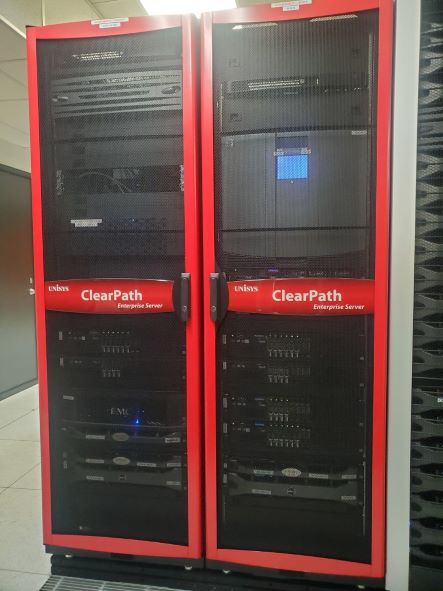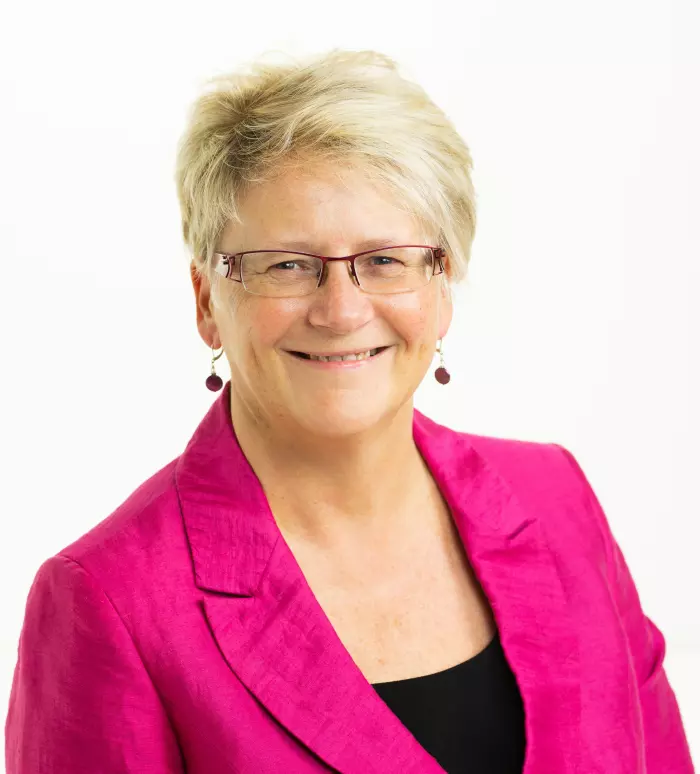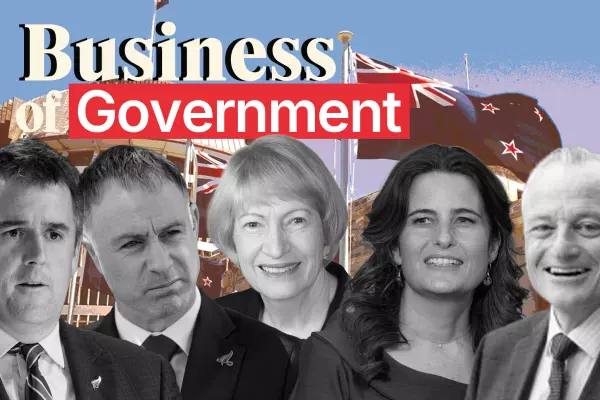PwC tax partner Geof Nightingale remembers a budget lock-up about a decade ago where the then finance minister, Bill English, declared that a particular tax reform was impossible because the Inland Revenue Department’s (IRD) IT systems were just too inflexible.
As of six weeks ago, that excuse officially stopped holding water.
The evening of Nov 30, 2021, saw the completion of a journey that began as a twinkle in a tax official’s eye about a decade ago, as the last major upgrade to the IRD’s $1.5 billion new START system was switched on to neither fanfare nor a ghastly graunching of technological gears.
For Naomi Ferguson, the Irish-born commissioner of the IRD who led the tax department through the thick end of a process of transferring trillions of pieces of sensitive personal data, the replacement of 40 million-odd lines of computer code, and some 400,000 dummy runs, there was “joyous relief”.
Yet, most of the thousands of taxpayers who grudgingly coughed up hundreds of millions of dollars of provisional tax that was due last Saturday, Jan 15, will barely have noticed anything other than, perhaps, less hassle and more accurate tax assessments.
That’s the way Ferguson likes it.
“Nobody lives to be a taxpayer,” she readily concedes. “We all know it's important, but you don't get up in the morning thinking, ‘today's the day’.”
Yet, when compared with the rollcall of failed government IT projects – Novopay and INCIS being two whose names are written into the annals of infamy – the virtually unnoticed replacement of the system that pumps blood to the heart of everything the government pays for is being quietly lauded as a massive achievement.
While not every accountant or tax agent BusinessDesk talked to was keen to be quoted saying nice things about our tax overlords, the feedback was consistent.
IRD has replaced its fundamental infrastructure with a platform that is easier to use than its 30-year-old predecessor, FIRST, produces more accurate assessments than in the past, and is probably collecting quite a bit more tax.
Nightingale, who freely admits bias since he sat on an advisory committee keeping an eye on the project, says it has been “a tremendous success”.
“I don’t think anyone really realises the complexity of building a new tax system and operating a very old one in parallel but it’s been virtually seamless.”
Fooling FIRST in order to START
However, Ferguson says it wasn’t always easy convincing the old system there was a new game in town.
“I used to talk about us faking it in FIRST because it still liked to think it was in charge. So you had to kind of help it not do things that we didn't want to do because it was still running live,” she said.
The challenge now, say observers, is to ensure that START keeps up with the times better than FIRST did.
A hilarious YouTube video heralding the birth of FIRST in 1991 is a time capsule snapshot of just how much change can occur in the next 30 years that the START system will hopefully cope with.
The 1991 video was probably leading-edge public relations practice at the time, with the VHS tape most likely mailed out to accountants, back when it was still possible to find a mailbox and tax refunds arrived as cheques in your letterbox.
Now, the video is much an excruciating historical artefact with its boofy hair-dos, Morris 1100s in the background, and a pre-cultural sensitivity presenter who plants his rear-end on a desk while marvelling at manual data entry from hand-written tax returns into a computer that looks like a Space Invaders machine.
“That was almost the first transformation from paper to digital, and people had a shared computer amongst them,” says Ferguson.
Email didn’t exist. Nor did laptops. One scene in the video shows a tax agent sitting down outside, opening his briefcase laptop-style, and raising the antenna on his brick-sized mobile phone demonstrated that interaction with the IRD was now possible anywhere, anytime.
“What we did with it over 30 years of adding various things on like KiwiSaver, and child support and making it understand that there was this thing called ‘the services’, which of course, it didn't really, it was all bolted on the top, and kind of clunky,” says Ferguson. “But it did do an amazing job.”
Don't build it, buy it
However, changing from one system to the next was opening Pandora’s box, says Greg James, deputy commissioner, transformation – God2 for short, apparently – at IRD for the entire project.
“When you open Pandora's box, you are never quite sure what sits in there after 30 years of activity. So yeah, so it's been a huge for our business.”
 Greg James - tax system transformation's 'God 2'
Greg James - tax system transformation's 'God 2' Most important was the decision very early not to try and build SECOND to replace FIRST.
“I was really keen that what we weren't going to do was just re-platform,” said Ferguson.
The first key decision was not to build the system from scratch in-house but to choose an array of hardware and software vendors whose own businesses would stand or fall on their ongoing investment in keeping up with the future of IT.
That meant choosing ‘off-the-shelf’ solutions from some of the world’s biggest names – the likes of Oracle, SAS, Microsoft and FAST, the American provider of tax system software that even included two or three software engineers who’d worked on the original FIRST system.
“I was a big supporter of the early discussion of using ‘off the shelf’ systems,” says Nightingale. Doing so transferred the risk associated with execution and future upgrades to parties whose core business was to adapt their products to change.
Not that it’s possible to bolt any computer system onto something as complex as one country’s tax system, particularly given the legislative requirements that dictate what the system must do, and its inevitable interaction not only with other government agencies’ legacy systems, but also the software and systems provided by tax agents and accounting software providers like Xero and MYOB.
IRD insiders – many still coming to terms with five years of an intense organisational restructuring that has stripped about 1,600 people out of the department’s workforce of around 4,000 – say there are still plenty of complex workarounds required to make the new system hum.
IT is one thing, people are another
And there is plenty of evidence – let alone reasons – for this human side of the transformation programme to have been as challenging, even if less potentially costly and prone to failure than the $1.5b upgrade itself.
In 2019, for instance, IRD reported dismal staff engagement figures, with just 29% of the workforce feeling good about that place. Revenue minister Stuart Nash issued a ‘please explain’ and Ferguson agrees the process of completely reshaping the department was not easy.
However, a complete transformation had to include changes to the way tasks were done if the potential of the new system was to be realised.
Just one example: the old system was capable of producing as many as four different views of a single taxpayer. Now, START gives a single, holistic view. That fundamentally changes the way staff can and do interact with their ‘customers’.
It has even created challenges for the most feared of IRD’s employees – experienced tax investigators, says Nightingale.
“If you are a very experienced tax investigator and you don’t do audits anymore and you are doing data analytics, it’s a more effective way of auditing, but it feels very different to someone who’s been doing it another way for 30 years,” he said.
Given the public sector track record of muffed implementations, the mission-critical status of the tax system for governments, and the $1.7b budgeted for the whole project, it was always going to be important not to stuff up the IT side of the question.
 The heart of the old FIRST tax system mainframe - now silent forever
The heart of the old FIRST tax system mainframe - now silent foreverIn the end, the budget has been under-spent, with about $200 million heading back to central government coffers, the project delivered on time, but Ferguson is up-front that the people management side of the change has been “pretty rocky”.
“That wasn't one of the flashest of scores we've ever had,” she says, referring to the 2019 staff engagement nadir, “but recently, I'd say in the past 18 months, that's become a lot more positive, partly because people can almost see the other end of the journey.
“One of the big changes that we made was moving from people being, you know, a child support administrative officer specialist, to a customer officer, who can look across customer and understand products in the wild, and the capability lift of our people has been brilliant.
“It's been hard at times, as people have gone through all of the emotions that go with understanding how to still value that specialist knowledge, but equally grow it, and to think about learning to use some of those digital tools.”
Nightingale says “years of transformational change in a stable workforce – that has been very tough” on people who work at IRD out of a belief in the value of what they do.
“There’s still some work to do to rebuild trust in that context. People are being asked to work differently.
“Maybe they were too focused on the IT," he concedes, “but that was the biggest risk the whole way through”.
Covid benefits
There is also no doubt that being so far through the transition to new, more flexible systems was fundamental to the government’s response to the covid-19 pandemic.
It allowed rapidly building a window into the tax system that allowed the Ministry of Social Development (MSD) to swiftly funnel billions in cash out the door to businesses seeking wage subsidies and saw the resurgence payments system operational within a matter of days after emergency policy development was completed.
“Every day, we see the difference it's actually making to people in terms of running their businesses and in terms of living their lives,” said Ferguson.
She compares IRD’s smooth operations despite virtually all its people having to work from home last year to the huge disruption the department experienced after the Canterbury earthquakes when 800 people were suddenly unable to go to the office.
She offers a telling, if very tax-specific, example of how the system has rolled on.
“The percentage of debt outstanding in 2012 of revenue, which was just after the Canterbury quakes, and we were, you know, off the back of GFC (global financial crisis) … was sitting at just over 10% of the revenue that was due, right.
“It's currently sitting at four and a half (percent).”
What’s next?
Now, the important thing is that IRD doesn’t rest on its laurels and keeps on investing in ongoing improvements in efficiency, simplicity, and reduced cost of compliance, says John Cuthbertson, tax lead for Chartered Accountants Australia New Zealand.
“What’s been achieved is simply a platform for the future. It’s an enabler. We need to leverage off the money that’s been spent to drive down compliance and administration costs and risk.
IRD agrees.
“I could see a day, which is kind of hypothetical, but where GST could actually be consumed at source,” says Greg James, meaning GST would be paid as soon as it was charged rather than requiring businesses to file regular GST returns. “Whether that's an input source or an output source doesn't really matter – the technology’s not that far away from being able to (do that).”
Says Ferguson: “We have created an architecture that has got that flex and future, we would expect as a department to always be upgrading, you know, again, there's this forward budget for that.”
But Cuthbertson and others are proposing a wider, more demanding agenda, which saw a group of senior practitioners, including Cuthbertson, Nightingale and Deloitte tax payer Robyn Walker produce a Business NZ-sponsored ‘Future of Tax Administration’ paper last December on what next steps should like.
“How will they use data analytics for meaningful engagement? The onus should be on IRD that they get that data as accurate as possible and not going to taxpayers unnecessarily.”
Likewise, he says the focus on self-service through the web portal is great, but IRD will need to make sure the helpdesk is staffed 24/7 because there will still be a time when taxpayers and their agents need “real-time help when things do go wrong”.
The data IRD seeks must also be relevant and useful – there are fears that the existence of very powerful analytical tools will produce ever-increasing demands for information that may or may not be useful.
The current brouhaha over rushed legislation that requires the calculation of income derived by, say, a family member holidaying a beach-house owned by a family trust, is a prime example.
Piggy in the middle
Deloitte tax partner Robyn Walker says the IRD has a particular job to do for tax intermediaries – the variety of tax agents, payroll providers, and business software firms whose systems are increasingly the source for the information the IRD uses to calculate tax obligations.
“The mantra has been about the customer, focusing a lot on the taxpayer,” she says. “But when it comes to intermediaries, they haven’t always done the best job of considering those who are involved other than IRD in helping taxpayers.
“IRD, to a degree, have decided what they want the destination to be and it falls to everyone else to scramble to catch up.”
The tax administration paper belabours the obligation on the tax authorities not only to make automatic tax calculation easier but not to create a penalty regime that pings the wrong parties if the information given in good faith turns out to have given the wrong answer.
“There is no benefit from digital investment if the calculations produced by an IT system must be checked by recalculating the results the IT system produces,” the tax administration paper says. “The tax system needs to recognise this and not hold people accountable for system errors which are not within their knowledge or control.”
Of one thing, Robyn Walker is certain: “The computer system won’t do the courts out of a job. They can’t help themselves, making things complex.”
The START timeline:
October 2012 | Meetings with Ministers of Finance, Economic Development and Revenue. |
November 2012 | First meeting with Cabinet Strategy Committee. |
March 2013 | Agreement on strategic objectives and business case for system replacement from Cabinet Committee on State Sector Reform and Expenditure Control (SEC). |
May to August 2013 | Meetings with Government ICT Ministerial Group refining strategic choices and vendor engagement preparations. |
August 2013 | Agreement on business case from Cabinet Economic Growth and Infrastructure Committee. |
March 2014 | Funding sought from Cabinet Business Committee. |
November 2014 | SEC approves commencement of design of new system. |
November 2015 | Cabinet approval for detailed business case |
June 2016 | First phase of tax legislation allowing replacement of outdated systems and simplification of administrative processes enacted. |
February 2017 | Stage 1 go-live – GST moves to the START platform. |
February 2018 | First major staff reorganisation – 3,000 staff move to new roles. |
March 2018 | Second major tax law changes to improve accuracy of tax collection, including new reporting requirements for employment and investment income reporting. |
April 2018 | Stage 2 go-live – withholding taxes, fringe benefit tax, gaming machine duties move to START; new systems for provisional tax calculation and automatic information exchange with international tax treaty partners implemented; voluntary introduction of payday filing for PAYE. |
September 2018 | Redesigned website pilot version launched for feedback, focused on child support. |
February 2019 | Budgeting and forecasting functions move to new enterprise support services platform. |
Early 2019 | New, powerful data analytics platform implemented, hugely improving IRD’s capacity to analyse information and target activity to where it was most required. |
April 2019 | Second major tranche of amending legislation simplifies tax assessments for individuals by issuing refunds automatically and allowing application for tailored tax codes. |
April 2019 | Stage 3 go-live – income tax and Working for Families move to START platform, payday PAYE filing becomes mandatory, new investment income requirements introduced on a voluntary basis. |
October 2019 | Second phase of new enterprise services platform to cover internal finance, procurement and some human resources functions. |
February 2020 | New Tax Counsel Office established. |
May 2020 | First release of new tax technical website goes live – rulings, determinations, interpretation statements and other technical documents go online. |
September 2020 | Third release of new enterprise services platform – now includes sustainability and affordability functions. |
March 2021 | Final internal staff reorganisation completed – new enterprise services and enterprise design and integrity groups. |
March 2021 | Stage 4 phase 1 go-live – paid parental leave, unclaimed money, duties, NZ foreign trusts move to START. |
March 2021 | Child support amendment legislation becomes law ahead of October changes. |
October 2021 | Stage 4 phase 2 release go-live – child support moves to START, upgrade of whole START platform for both online users and IRD staff. |
November 30, 2021 | FIRST system turned off, START now ‘in charge’. |















